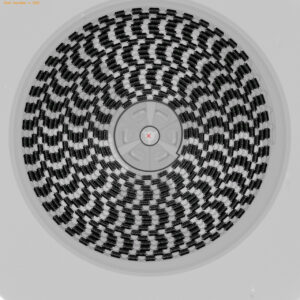What is solder paste
Solder paste handling is critical for its use in production enviroment. As it is a type of interconnection material used in the process of soldering electronic components onto a printed circuit board (PCB). It is a thick, viscous mixture of fine metal particles (usually tin or lead) suspended in a flux compound, and it is typically supplied in a syringe or tube for easy application.
When assembling an electronic circuit, solder paste is first applied to the PCB using a stencil or screen printing process. The components are then placed onto the PCB, and the assembly is heated to a temperature that is high enough to melt the solder paste and cause it to flow, but not so high as to damage the components or PCB. As the solder paste melts, it creates a mechanical and electrical connection between the component leads and the PCB pads, bonding the component in place.
Solder paste is used because it is easier to apply and control than molten solder, and it allows for a more precise and consistent connection between the components and PCB. It is an important tool in the production of electronic circuits, and it is widely used in industries such as consumer electronics, automotive, and aerospace.

Solder paste flux
In the context of solder paste handling, we also need to discuss about flux, which is a chemical compound that is used to remove oxides and other contaminants from the surfaces of metals being soldered, and to prevent the formation of new oxides during the soldering process. It is a key component of solder paste, which is a type of adhesive used in the process of attaching electronic components to a printed circuit board (PCB).
There are many different types of flux, each with its own unique properties and characteristics. Some fluxes are more aggressive and are used to remove heavy oxide layers or to clean dirty or contaminated surfaces, while others are less aggressive and are used to protect delicate components or to prevent the formation of new oxides.
The flux in solder paste serves several important functions:
- It removes oxide layers and other contaminants from the surfaces of the metals being soldered.
- It promotes wetting and helps the molten solder flow more easily over the surfaces being soldered.
- It helps to prevent the formation of new oxides during the soldering process.
- It reduces surface tension and increases the wetting ability of the molten solder.
The type of flux used in a solder paste will depend on the specific application and the requirements of the soldering process. It is important to choose the appropriate flux for your application, as the wrong flux can lead to poor wetting, reduced adhesion, and other problems.
IPC 7257
IPC-7527 is a standard published by the IPC (Association Connecting Electronics Industries) that provides guidelines for the design and production of solder paste stencils. It covers a range of topics related to solder paste printing, including stencil design and material selection, printing process parameters, and inspection and measurement techniques. The goal of the standard is to provide a set of best practices that can be used to ensure consistent and high-quality solder paste printing in electronics manufacturing.
some of the key topics covered in IPC-7527:
- Stencil design and material selection: The standard provides solder paste hanlding guidelines for selecting the appropriate stencil thickness, aperture shape and size, and material for the specific application. It also covers the use of electroformed and laser-cut stencils, as well as the design of non-rectangular apertures and other special features.
- Printing process parameters: The standard includes recommendations for setting up and optimizing the solder paste printing process, including factors such as stencil-to-board pressure, squeegee speed and angle, and print speed. It also covers the use of stencil wipes and other cleaning methods to maintain print quality.
- Inspection and measurement techniques: The standard provides guidelines for inspecting and measuring the quality of solder paste prints, including methods for evaluating stencil performance, paste transfer efficiency, and print defects such as voiding and bridging. It also covers the use of automated optical inspection (AOI) systems and other inspection technologies.
- Other topics: The standard also includes information on related topics such as storage and handling of stencils, training and certification requirements for personnel involved in solder paste printing, and the use of statistical process control (SPC) to monitor and improve print quality.
Solder paste handling
Solder paste is a thick, viscous mixture of fine metal particles (usually tin or lead) suspended in a flux compound, and it is typically supplied in a syringe or tube for easy application.

Regarding solder paste handling, it is important to follow these guidelines:
- Store the paste in a cool, dry place, away from direct sunlight or other sources of heat.
- Avoid exposing the paste to moisture or humidity, as this can cause it to dry out or become contaminated.
- Keep the paste in its original packaging or transfer it to a suitable container with a tight-fitting lid.
- If the paste has been opened, it is a good idea to apply a layer of plastic wrap or aluminum foil over the opening to help keep it fresh.



Solder paste handling temperature requirement
Solder paste has a limited shelf life, and it is important to use it before it expires. The shelf life of solder paste will depend on the specific product and the conditions under which it is stored, but it is generally around 6-12 months from the date of manufacture. It is a good idea to check the expiration date on the packaging and use the paste as soon as possible to ensure the best performance.
Temperature is an important factor to consider when you need proper solder paste handling, as it can have a significant impact on the performance and shelf life of the paste. Solder paste is a thick, viscous mixture of fine metal particles (usually tin or lead) suspended in a flux compound, and it is typically used in the process of attaching electronic components to a printed circuit board (PCB).
Exposure to high temperatures can cause solder paste to dry out or become more viscous, making it difficult to apply and leading to poor wetting and adhesion. On the other hand, exposure to low temperatures can cause the paste to become too thick and difficult to dispense, or to crystallize, which can cause it to become unusable.
To ensure the best performance and longest shelf life of solder paste handling, it is important to store solder paste in a cool, dry place, away from direct sunlight or other sources of heat. The ideal storage temperature for solder paste is around 15-25°C (59-77°F), although some products may be able to withstand slightly higher or lower temperatures. It is a good idea to check the storage instructions on the packaging of the paste, and to follow any specific temperature guidelines provided.
Main solder paste supplier
- Qualitek https://qualitek.com/
- Indium https://www.indium.com/
- MacDermind Alpha : https://www.macdermidalpha.com/
- AIM: https://aimsolder.com/
- KOKI:https://www.ko-ki.co.jp/en


